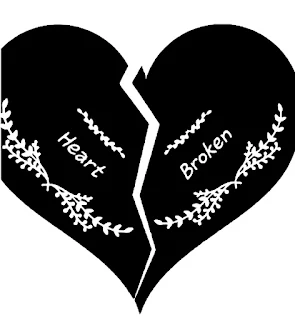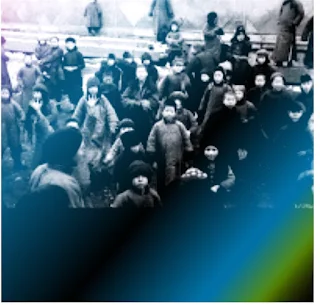-
The Sweet Symphony of Love: A ®📧🅰🕒Real Story in Poetry
Introduction
Love is one of the most powerful forces in the world, often defying reason and logic, yet it's felt in the most profound ways. It makes people feel alive, gives them strength, and at times, breaks them ⏬down. Every love story is unique, with its own set of joys and sorrows, but every love, in its truest form, is a journey of discovery and growth.
In this article, we explore the sweet poetry of love and a real-life love story that exemplifies the purity ➕and complexity of true affection. We dive into how love can be celebrated 👉🙌👈through poetry and how real love stories unfold, showing both the beauty and pain of being in love.
---
Sweet Poetry of Love:
English Poetry:
Love is a feeling that transcends boundaries and languages. Poets have been capturing the essence of love for centuries, portraying its beauty, struggles, and eternal nature. Here's a poetic reflection of love:
"A Heart Full of Love"
In the stillness of night, my heart calls for you,
With every beat, a whisper, a longing so true.
Your name etched deeply in my soul,
Filling the empty spaces, making me whole.
In the tender embrace of your gaze, I find my peace,
For in your ❤😘Love, 🙋I feel all worries cease.
The world may turn, the seasons may change,
But my love for you will never rearrange.
I walk through life with you by my side,
In your love, I take pride.
Every moment, every smile, every touch,
Is a reminder of how I love you so much.
---
Urdu Poetry:
"محبت کا رنگ"
چاندنی رات میں تیری یادوں کا رنگ،
دھڑکنوں میں تیرے پیار کا سنگ۔
تیری مسکراہٹ، تیری خاموشی،
میرے دل کی دھڑکنوں میں تیری روشنی۔
میرے خوابوں کا رنگ، تیری آنکھوں کا رنگ،
ہر لمحہ تیرے خیالوں میں ڈوبا سنگ۔
محبت کا وعدہ، وعدہ نہیں تھا،
پر تیرے بنا، کچھ بھی مکمل نہ تھا۔
دنیا کا ہر دکھ، ہر درد، ہر غم،
تیری محبت میں غرق ہو جاتا ہے، وہ کم۔
میرے دل کی دھڑکن میں بس تُو ہو،
یہ ایک کہانی، یہ ایک سچّی خواہش ہو۔
---
A Real Story of Love:
Love isn't just an abstract concept; it's something that people live, feel, and experience every day. Here is a real story that demonstrates the trials and beauty of love:
The Story of Sarah and Ali:
Sarah and Ali were childhood friends. They grew up in the same neighborhood, attended the same school, and shared everything from books to secrets. But as they entered adulthood, life took them on separate paths. Sarah moved to another city for her studies, while Ali stayed back and focused on his family’s business.
Despite the distance, they remained in touch. However, the nature of their relationship slowly changed. Over time, what started as friendship blossomed into something deeper. They would talk for hours on the phone, sharing dreams, fears, and everything in between.
One evening, as Sarah was about to board a flight back home for the holidays, Ali sent her a message, "I don't know when it happened, but I think I've fallen in love with you."
At first, Sarah was hesitant. 👧She had always seen Ali as a friend, and she didn’t know if she was ready for a relationship. But deep down, she realized that she had always loved him too. Their friendship had laid the foundation for something much deeper, and they both felt it.
Ali and Sarah met after months of long-distance calls. When they saw each other, the distance seemed to disappear. Their first kiss was under a tree in the park, where they used to play as children. In that moment, they both knew that the love they shared was something special and that they were meant to be together.
But love, as we know, is never simple. Despite their strong bond, they faced challenges. Sarah’s family didn’t initially approve of Ali, and their cultural differences caused friction. However, their love for each other remained unwavering. They fought for their relationship, making sacrifices along the way.
Over the years, Sarah and Ali grew together, facing both joy and hardship hand-in-hand. Their love story became a symbol of perseverance, trust, and understanding. They learned that love was not just about grand gestures, but about supporting one another through the mundane moments of life.
Now, years later, they are married, and though their journey was not always easy, their love remains as deep and as pure as it was in the beginning. Through trials and triumphs, they have built a life based on love, respect, and a shared vision for the future.
---
Conclusion:
The poetry and real-life story shared above demonstrate the transformative power of love. Whether it's expressed through words, actions, or silent support, love has the ability to change us and shape our lives in ways we never expected. While love can bring great joy, it can also bring pain, but it is through these experiences that we grow.
Love isn't about perfection; it’s about connection, understanding, and the willingness to 💪👊🔫fight for what truly matters. The sweet poetry of love and real-life stories like Sarah and Ali’s remind us that love is both a journey and a destination—a journey that is worth taking, no matter how difficult the path may be.
---
Title Suggestions for the Article:
1. "The Sweet Symphony of Love: Real Stories and Poetry of the Heart"
2. "Love's True Essence: Sweet Poetry and a Real-Life Story of Heartfelt Affection"
3. "From Friendship to Forever: A Real Love Story and Beautiful Poetry"
4. "The Journey of Love: Sweet Verses and a Real Story of Romance"
5. "Enduring Love: Poetry and a Real Story of Passion, Struggle, and Triumph"
---
Description for the Article:
This article weaves together the sweet poetry of love and a real-life love story, illustrating the complexity and beauty of true affection. From the emotional depth captured in heartfelt poetry to the genuine journey of Sarah and Ali, the 📖story exemplifies the power of love in overcoming challenges and growing stronger. With a blend of English and Urdu poetry, the article shows that love, in all its forms, is worth fighting for and celebrating.

































